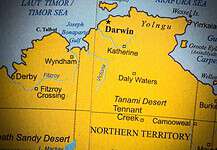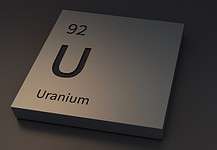IN THE SPOTLIGHT
with Peter Walker, Director at ORBIZ
Q. Why are critical minerals important to Australia?
To combat climate change, governments around the world are steering away from fossil fuels towards renewable sources. However, the creation of renewable energy infrastructure requires an immense amount of critical minerals to meet the exponential growth in demand.
Australia is blessed with vast mineral riches, not least in critical minerals vital to our economic success. We’re the world’s leading producer of bauxite, alumina, rutile (titanium) and tantalum. We’re also the second-largest producer of uranium, lead, ilmenite, zircon (zirconium) and lithium, and the sixth-largest producer of the so-called rare-earth minerals.
For all Australia’s riches, we’ve only explored around 20% of our landmass. We, therefore, have the potential to tap into our enormous reserves of critical mineral supplies in the future.
The paradox is that China is at present responsible for 70% of the rare earth’s global production, despite owning only 36% of the world’s total known reserves.
The Australian and US governments are collaborating on the Action Plan for Critical Minerals. Scientists from both countries will work to find what minerals exist and where; they will also ‘mine’ data to model what minerals the market wants.
Renewable energy and electrification are critical themes for governments around the world. The rising need for renewable energy sources such as lithium-ion batteries and other compositions under development will be exponential. Manufacturers therefore need to supply the materials to make batteries – primarily lithium, cobalt and nickel – to meet the new demands.
But we also need storage solutions for electricity generation – the wind will not always blow, and the sun won’t always shine. There will also be a race to develop appropriate domestic and utility-level battery solutions that require massive amounts of critical mineral resources. Electric vehicles will need larger batteries to tackle range anxiety and power heavy goods vehicles. They will also need to store energy at a domestic and utility level. That is where something better than lithium-ion is required. Lithium-ion may meet the demand for smaller applications but will struggle to match higher energy demands from larger applications.
Q. How can Australian mining businesses make the most of the demand?
Over the coming years, we will likely see a greater focus on mining for these critical minerals. This presents a once in a generation opportunity for mining companies to scale operations – benefiting both the sector and the broader economic environment across Australia.
However, the challenge with scaling up is how to do it efficiently. Government, industry, and academia need to come together to ensure that the infrastructure is in place to scale up operations when and where they are required to meet future demand.
Wholescale infrastructure investment needs to take place to support growth. We’re talking about new roads, railways, shipping ports, and airports for FIFO workers. As government and environmental legislation continue to increase, it could put a brake on this kind of expansion.
If not appropriately managed, scaling up can lead to massive inefficiencies within individual mining operations and increase wastage, huge overheads, and potential failure. Project delays and budget overruns can break mining companies before they find critical minerals or break into profit.
So before the diggers and loaders roll in, mining companies and governments need to create a detailed roadmap that meticulously plans out the requirements to meet growth objectives.
More specifically, within mining companies, it’s also crucial that teams align so they understand what needs to be achieved. They also need to address bottlenecks in the value stream at every stage of each project.
Q. Why is it important to invest in people and new technology-driven processes?
People are the lifeblood of every company. But they need to be on board and working towards the big picture, not just their individual tasks.
Every single person in a company needs to fully understand their roles and responsibilities for a scale-up operation. Companies have to establish clear and measurable goals, with processes tested and continuously improved upon. By investing in these areas, companies can ensure they maintain efficiency and maximise productivity as they grow.
But investing in people isn’t just about money either. The key to building a high-performance culture is also about investing time to immerse the entire team into the day-to-day challenges and opportunities on the ground.
Once the workforce is aligned and engaged, it’s then time to arm them with the technology and tools that help them to get their jobs done.
From a technology-driven processes perspective, tools that enable real-time value stream and critical path mapping are hugely important when planning projects. They also encourage transparency among teams on their roles and responsibilities. They can help to illustrate how specific tasks impact other elements of the project.
We recently introduced the Last Planner® SaaS solution in partnership with Touchplan. This technology tool helps construction companies better measure, validate, and continuously improve the building process in real-time. I expect that we will see an increasing number of technology-driven processes like this tailored specifically for the mining industry over the coming years.
Q. How do you introduce a Lean philosophy and processes that eliminate waste?
Continuous Improvement is founded on the principle of positive, ongoing change. That’s the concept that defines our core ethos at ORBIZ.
We are a team of experienced and dynamic Lean management consultants, driven by a passion to deliver strategic performance improvement outcomes in business operations and financial metrics across sectors, geographies and organisation types.
For us, in its simplest form, Lean is all about eliminating waste. Those organisations that do this successfully reduce costs whilst improving safety and efficiency across all aspects of the business.
There’s an entire tried and tested approach involved, but the first and most crucial step involves senior leadership teams going through the ‘Go-Look-See’ process at a mining site. This allows us to communicate directly with the workforce and discover first-hand the challenges on the ground and any activities that waste resources, time, or money.
Once this frontline analysis is complete, leadership can then introduce integrated Lean systems and techniques that address each of the identified problems as part of an improvement strategy.
To provide an example, we recently implemented an improvement strategy with Phu Bia Mining to reduce plant shutdown durations and increase annual production output. After completing a ‘Go-Look-See’ and an in-depth review of the current processes, we identified opportunities for eliminating waste and implemented procedures to standardise work practices across the mine. The results were profound, delivering a 41% reduction in overall shutdown duration.

Q. How do you resolve bottlenecks that could impact entire operational capabilities?
Ultimately, what we are trying to do in an organisation is to remove bottlenecks in the value stream and create flow. That’s where projects align, so one particular scheme of work doesn’t hold up another.
Tackling individual bottlenecks doesn’t work. More often than not, as one constraint is resolved, another one occurs. That’s the Theory of Constraints. You may have heard of the weakest link. Every project will fail if some part of it breaks the chain.
However, if we take a step back and look at all bottlenecks simultaneously, we can see how we can create the conditions for ‘flow’ and prevent one project from hampering another. It’s a way to ensure all elements of the chain are connected and bonding together.
The first step involves a thorough assessment of all systems, processes, and available data we have to hand. It’s then time to gather the findings and work out what processes, Lean tools, and methodologies will effectively resolve these issues. That’s the time to introduce a roadmap of improvements detailing the deployment of Lean systems and methods across the project. Lean organisations must ensure that the processes are continuously tweaked and improved to achieve maximum productivity and efficiency throughout the project.
Q. How can mining companies implement these strategies, and safeguard Australia’s position as an international powerhouse in providing renewable energy resources?
For local mining companies to keep up with a surge in demand for critical minerals, it’s essential to look at the industry through a ‘Lean’ principles lens. Mining companies, like governments, need to take a long-term approach that isn’t focussed purely on short-term operational improvements but instead harnesses Lean principles and a culture of continuous Improvement.
At ORBIZ, we implement a tried and tested model that we refer to as the Virtuous CIcle, based on the Lean principles practised by the highest performing industries and organisations across the world.
The letters CI represent Continuous Improvement, the very reason we exist.
The Virtuous CIcle begins with a clear, overarching purpose that aligns people across the value chain to devise an efficient process, driving performance improvement beyond the duration of any engagement.
By doing so, they can lay the foundations to enable growth while underpinning their business and the industry for decades to come.








































